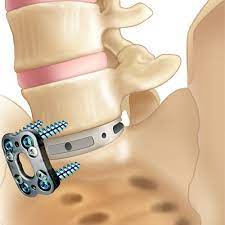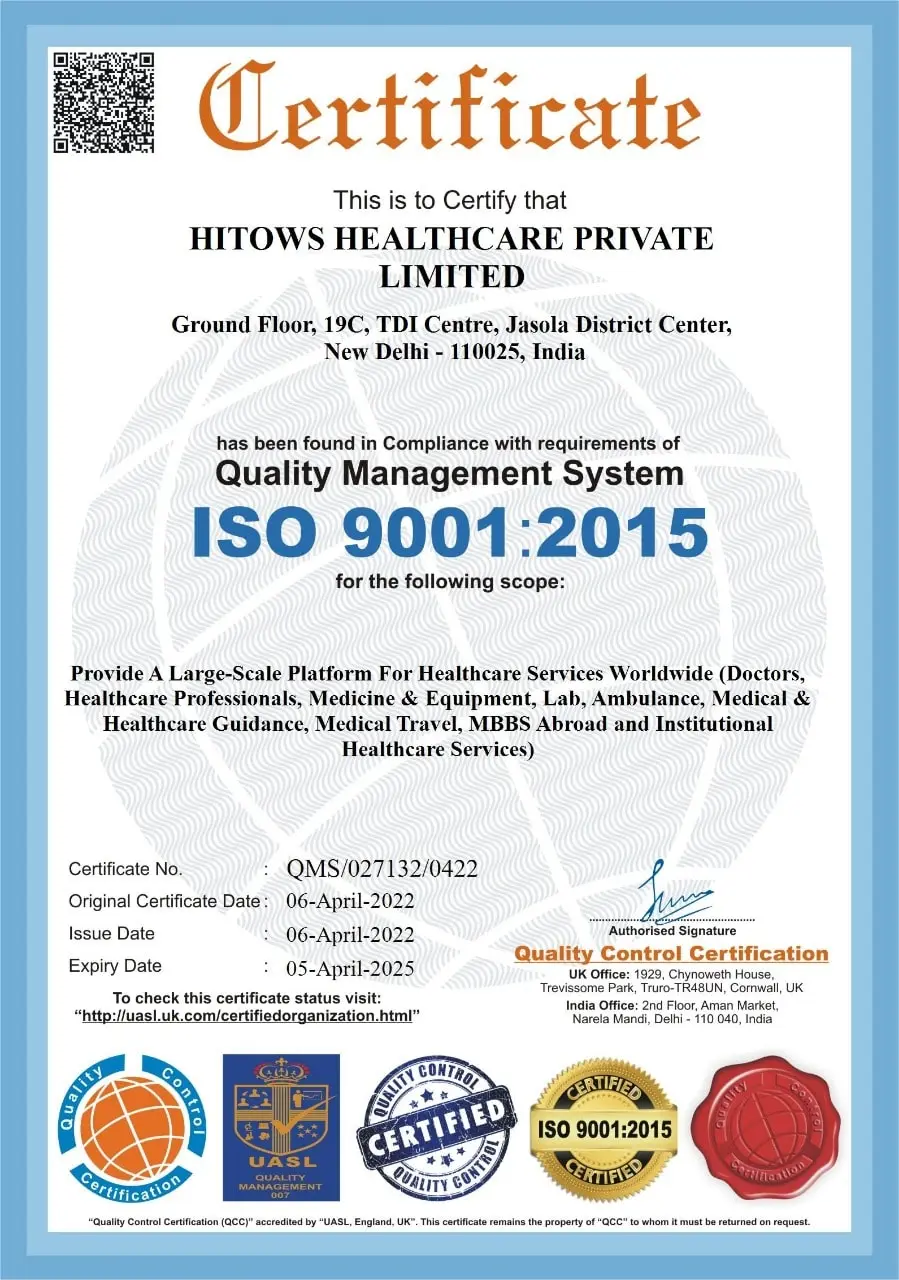Lumbar Anterior Spinal Fusion Surgery
India
-
Our Price USD 4860
-
Hospital Price USD 5400
-
You Save : USD 540
Booking Amount: USD 486. Pay Remaining 90% at the hospital.
Book NowAdditional Credit
Among the important extras we offer as part of the Additional Credit are the following:
-
Site Tourism For The Patient & Attendant
-
Airport Pick & Drop Service
-
Ambulance service at airport
-
Priority appointments with The Doctor
-
Cancel Easily Anytime with Full Refund
-
Room Upgradation
-
Free Online Doctor Consultation Valued at USD 20
-
Free hotel Stay for 5 to 7 days Accordingly
-
Welcome Kit at Arrival
-
Interpreter
-
Medical Visa Assistance
What is Included?
- Doctor consultation charges
- Lab tests and diagnostic charges
- Room charges inside hospital during the procedure
- Surgeon Fee
- Cost of implant
- Nursing charges
- Hospital surgery suite charges
- Anesthesia charges
- Routine medicines and routine consumables (bandages, dressings etc.)
- Food and Beverages inside hospital stay for patient and one attendant.
What is not Included?
- Extra Radiology Investigations
- Healthcare Professionals Charges of other consultations.
- Other Requested Services such as Laundry etc.
- Additional Pharmaceutical Products and Medicines After Discharge from Hospital.
- Management of Conditions Unrelated to Procedures or Pre-Existing.
- The cost of any additional implants will be in addition to the package cost.
Package Description
Procedure Description:
Lumbar Anterior Spinal Fusion Surgery
In lumbar anterior spinal fusion surgery, two or more lower back vertebrae are fused together by means of an abdominal incision made by the surgeon to access the front of the spine.
Disease Overview:
lumbar degenerative disc disease
In the lumbar spine, or lower back, degenerative disc disease is a phenomenon where age-related degeneration of a spinal disc results in low back pain.
Tough and fibrous, intervertebral discs serve as ligaments between vertebrae, absorbing pressure and cushioning the spinal column. Discs can bend forward, backward, and side to side because they are sufficiently robust and flexible. Degenerative disc disease, despite its name, is not regarded as a real disease and does not get worse with time. Everybody has some disc degeneration, and discs naturally stiffen with age and use. The term "degenerative disc disease" only describes painful disc degeneration; as the spine eventually stabilizes, symptoms frequently go away.
Disease Sign and Symptoms:
Although symptoms can differ, common traits typically consist of:
1. Moderate, persistent low back pain: The most typical sign of a degenerative disc is painful discomfort at the location of a damaged disc. The groin, upper thighs, and buttocks may all experience pain. This discomfort can be modest to severe and usually feels dull and achy.
2. Occasional flare-ups of pain: Back pain can get worse for a few days or weeks before becoming less severe. As the disc degenerates further and the spine steadily stabilizes, flare-ups occur. Sudden and intense flare-ups of pain can impair mobility for a short while.
3. Sensitivity locally. It's possible that the low back region around the deteriorated disc is touch-sensitive. Tension in the surrounding muscles and inflammation around the degenerative disc are the causes of local soreness.
4. Pain in the legs. If the disc space compresses to the point where a nerve root exiting the spine is pinched, neurological symptoms such as numbness, weakness, or sharp, shooting sensations in the buttocks, hips, and/or back of the leg may be experienced. Lumbar degenerative disc degeneration typically does not cause leg pain below the knee.
5. Manifesting symptoms. As the disc weakens, there may be a sudden weakening or instability that gives rise to the fear that the low back will "give out" with abrupt movements.
Disease Causes:
excessive low back strain brought on by labor-intensive jobs, heavy lifting on a regular basis, or sports. lumbar spinal disc strain brought on by extended sitting and/or bad posture. weak core muscles resulting in a lack of support for the discs. Being overweight.
Degenerative Disc Disease Risk Factors
The spinal discs may be impacted by lifestyle choices that have an effect on general health. Degenerative disc disease risk factors include:
1. A family history of musculoskeletal diseases or back pain
excessive low back strain brought on by labor-intensive jobs, heavy lifting on a regular basis, or sports
2. Posture-related strain on the lumbar spinal discs from extended sitting
3. Weak core muscles causing the discs to lose support
4. Being overweight
5. Smoking or using nicotine in any way
Disease Diagnosis:
An MRI scan to rule out other conditions like a fracture or disc herniation that could be causing pain in addition to lumbar DDD may be necessary for a conclusive diagnosis. In order to precisely locate the deteriorated disc and arrange the surgery, an imaging test is necessary if surgery is necessary.
Disease Treatment:
Mitigating pain, stabilizing the spine, and preserving or increasing mobility are the major goals of treatment for excruciating degenerative disc disease. Treatment options for degenerative disc disease typically involve a mix of physical therapy, pain management strategies, and other methods.
Lumbar Anterior Spinal Fusion Surgery: During lumbar anterior spinal fusion surgery, the surgeon makes an abdominal incision to access the front of the spine in order to fuse together two or more lower back vertebrae.
Information related to Treatment
Package Details
Days in Hospital
4 Days
Days in Hotel
*
21 Days
Room Type
Private


